Qualys Bundle
Who Really Owns Qualys?
Ever wondered who steers the ship at Qualys, a cybersecurity giant protecting businesses worldwide? Understanding Qualys SWOT Analysis, and its ownership structure is key to grasping its strategic moves and future potential. From its IPO debut to its current market position, the evolution of Qualys's ownership reveals fascinating insights.
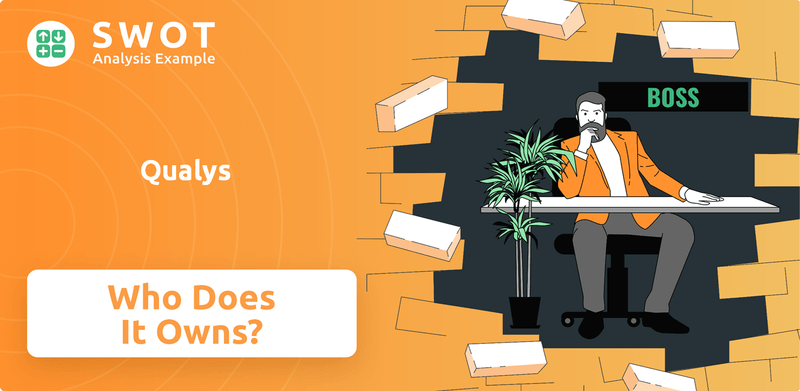
This deep dive into Qualys ownership will explore the journey of Qualys Inc., from its founding to its current status as a publicly traded entity. We'll examine the influence of the Qualys founder, major shareholders, and the impact of its financial performance, including the reported $554.5 million in revenue in 2023. Discover the details behind who owns Qualys and how this ownership shapes its direction.
Who Founded Qualys?
The story of Qualys, a prominent player in the cybersecurity field, began in 1999 with its co-founders, Philippe Langlois and Gilles Samoun. Their combined expertise laid the groundwork for what would become a leading provider of cloud-based security and compliance solutions. Understanding the company's origins is key to grasping its evolution and current status.
Gilles Samoun, as Chairman and CEO, brought experience from MediaPath Technologies and Verity, while Philippe Langlois, as Chief Technology Officer, contributed his background as the founder of Worldnet and Intrinsec, a computer security consultancy. This blend of business acumen and technical prowess set the stage for Qualys's early success.
Early funding played a crucial role in Qualys's trajectory. The company's initial financial backing and subsequent investment rounds highlight the importance of venture capital in its development.
Qualys was co-founded by Philippe Langlois and Gilles Samoun in 1999. Samoun served as Chairman and CEO. Langlois was the Chief Technology Officer.
The first funding round, on April 23, 2000, raised $8.4 million. Bessemer Venture Partners and VeriSign were among the original investors.
A second round of financing on April 10, 2001, brought in an additional $20 million. Key investors included Trident Capital and ABS Ventures.
Philippe Courtot became chairman and CEO in December 2000. He played a crucial role in the company's early development.
Early investors included venture capital firms like Bessemer Venture Partners, Trident Capital, and ABS Ventures. VeriSign was also an early investor.
The early ownership structure was heavily reliant on venture capital. This fueled Qualys's growth in the vulnerability management market.
Understanding the initial ownership of the Qualys company provides insight into its strategic direction and early growth. The founders, Philippe Langlois and Gilles Samoun, established the company in 1999. Early investments from firms like Bessemer Venture Partners and Trident Capital were crucial. The company's reliance on venture capital shaped its early development in the vulnerability management market. For more detailed information, you can explore further insights into the company's history and structure by reading about Qualys.
- Who owns Qualys is a question answered by examining its initial investors and founders.
- The early ownership structure shows a strong influence of venture capital.
- Philippe Courtot's role as chairman and CEO was pivotal in the company's early years.
- The Qualys founder team's experience in technology and business was fundamental to its start.
Qualys SWOT Analysis
- Complete SWOT Breakdown
- Fully Customizable
- Editable in Excel & Word
- Professional Formatting
- Investor-Ready Format
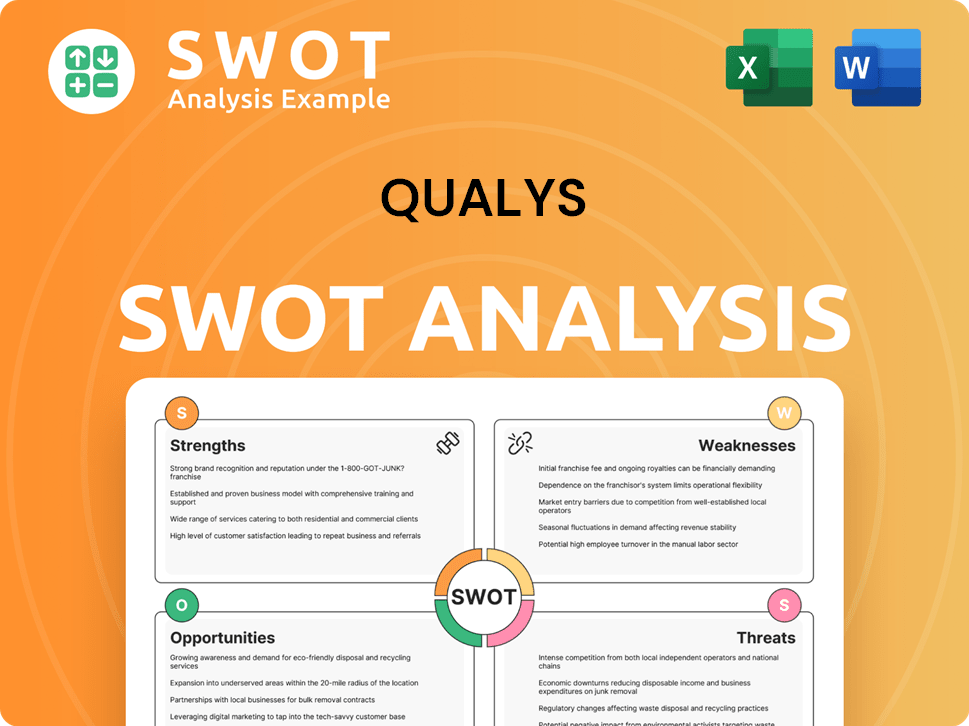
How Has Qualys’s Ownership Changed Over Time?
The journey of Qualys from a private entity to a publicly traded company significantly altered its ownership landscape. The initial public offering (IPO) on September 28, 2012, marked a pivotal moment, transitioning the company from private ownership to a structure open to a broad spectrum of investors. This shift introduced institutional and individual investors, reshaping the dynamics of the company's shareholder base and influencing its strategic direction.
The transition to public ownership has resulted in a highly institutionalized shareholder base. This evolution allows institutional investors to exert significant influence on company strategy and governance due to their substantial holdings. This has led to increased scrutiny and a focus on financial performance and strategic alignment with shareholder interests.
| Event | Date | Impact on Ownership |
|---|---|---|
| Initial Public Offering (IPO) | September 28, 2012 | Transitioned from private to public ownership, introducing institutional and individual investors. |
| Ongoing Market Activity | 2012-Present | Fluctuations in share ownership among institutional and individual investors, reflecting market dynamics and investor sentiment. |
| SEC Filings (13D/G, 13F) | Ongoing | Provide transparency into institutional ownership, detailing significant holdings and changes over time. |
As of June 11, 2025, Qualys (NasdaqGS:QLYS) has 867 institutional owners and shareholders, according to SEC filings. These entities collectively hold 43,390,776 shares. The top institutional shareholders include BlackRock, Inc., holding 5.7 million shares, and Vanguard Group Inc., with 4.3 million shares. Institutional ownership accounts for approximately 98.6% of Qualys's shares, with individual insiders holding about 0.64% and the general public holding 0.679%.
The majority of Qualys is owned by institutional investors.
- BlackRock and Vanguard are among the largest institutional shareholders.
- The IPO in 2012 was a major event in the company's ownership history.
- Institutional ownership significantly influences Qualys's strategy and governance.
- Public ownership has brought increased scrutiny and a focus on financial performance.
Qualys PESTLE Analysis
- Covers All 6 PESTLE Categories
- No Research Needed – Save Hours of Work
- Built by Experts, Trusted by Consultants
- Instant Download, Ready to Use
- 100% Editable, Fully Customizable
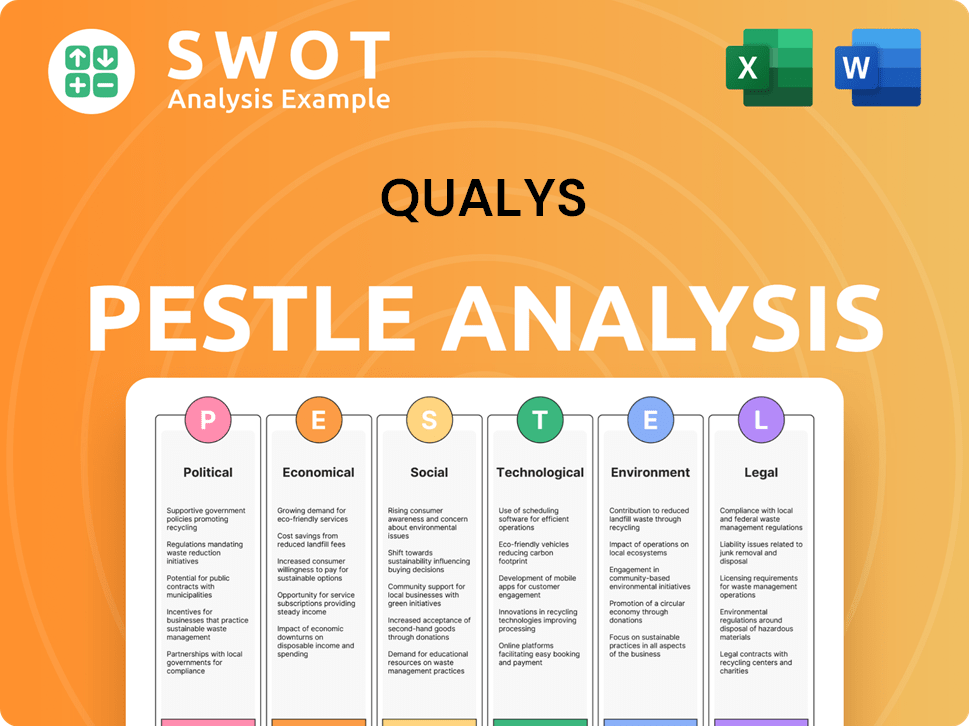
Who Sits on Qualys’s Board?
The current board of directors at Qualys, a prominent player in the cybersecurity sector, is crucial for its governance. As of March 2025, the board consists of six members. These members are divided into three classes, each serving staggered three-year terms. Class I directors' terms are set to expire at the 2025 annual meeting, Class II directors serve until the 2026 annual meeting, and Class III directors' terms expired at the 2024 annual meeting.
Key figures on the board include Sumedh S. Thakar, the President and CEO, and Joo Mi Kim, the CFO & Principal Accounting Officer. Other notable board members include John A. Zangardi, an independent director who purchased shares in August 2024, and Jeffrey P. Hank, who serves as Chairman. The company has stock ownership guidelines for non-employee directors and executive officers to align their interests with long-term shareholder value. These guidelines require non-employee directors to own shares equivalent to at least five times their annual retainer. Qualys does not have cumulative voting rights for the election of directors. Information about the election of Class I directors is outlined in recent proxy filings, such as the DEF 14A filed on April 23, 2025, for the June 11, 2025, annual meeting.
| Board Member | Title | Class |
|---|---|---|
| Sumedh S. Thakar | President and CEO | N/A |
| Joo Mi Kim | CFO & Principal Accounting Officer | N/A |
| John A. Zangardi | Independent Director | N/A |
| Jeffrey P. Hank | Chairman | N/A |
Understanding the Qualys ownership structure is essential for investors and stakeholders. For those interested in the company's strategic direction, further insights can be found in the Marketing Strategy of Qualys. This information is vital for anyone seeking to understand Qualys Inc. and its operations.
The board of directors at Qualys company plays a key role in the company's governance and strategic oversight.
- Board members serve staggered terms.
- Key executive officers sit on the board.
- Stock ownership guidelines align interests with shareholders.
- The company does not have cumulative voting rights.
Qualys Business Model Canvas
- Complete 9-Block Business Model Canvas
- Effortlessly Communicate Your Business Strategy
- Investor-Ready BMC Format
- 100% Editable and Customizable
- Clear and Structured Layout
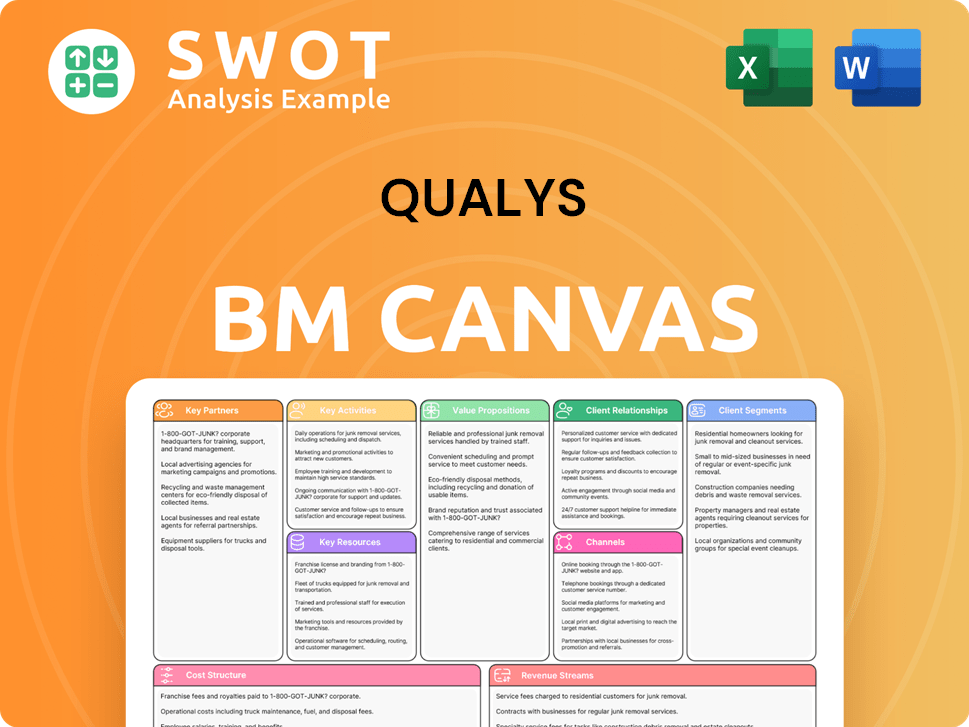
What Recent Changes Have Shaped Qualys’s Ownership Landscape?
Over the past few years, the ownership of Qualys has seen shifts primarily driven by institutional trading and capital management. As of June 7, 2025, insider ownership stands at 17.39%, while institutional ownership is at 96.42%, indicating significant institutional investment. Institutional investors have maintained a strong presence, with ownership remaining largely unchanged, around 99.91% in March 2025 and 98.08% in May 2025. Mutual fund holdings have increased, rising from 121.02% in February 2024 to 167.79% in February 2024, and remaining stable at 164.78% in February 2025 and 167.77% in May 2025.
Insider holdings have seen a slight decrease. For example, CEO Sumedh S. Thakar sold 7,000 shares in November 2024, and Director Jeffrey P. Hank sold 4,000 shares in the same period. These changes reflect ongoing adjustments within the company's ownership structure. The company's commitment to share repurchases and its strong financial performance also influence the ownership landscape.
| Metric | February 2024 | March 2025 | May 2025 |
|---|---|---|---|
| Institutional Ownership | N/A | 99.91% | 98.08% |
| Mutual Fund Holdings | 167.79% | 164.78% | 167.77% |
| Insider Holdings | N/A | 1.19% | 1.15% |
Qualys has been actively managing its capital through share repurchases. In 2024, the company spent $139.9 million on share repurchases. The board of directors authorized an increase of $200.0 million to the share repurchase program as of March 31, 2025, bringing the total authorization to $1.4 billion. These buybacks can potentially increase the ownership percentage of existing shareholders. The company's 2024 10-K report highlighted revenue of $607.6 million, a 10% increase from the previous year, and a strong liquidity position of $575.3 million in cash, cash equivalents, and marketable securities as of December 31, 2024. For more details, you can explore the Growth Strategy of Qualys.
Institutional investors hold a significant portion of Qualys. Insider ownership is also present, with some changes in recent periods.
Qualys actively manages its capital through share repurchases. The company's board authorized a significant increase in the repurchase program.
The company reported strong revenue growth in 2024. Qualys also maintains a robust liquidity position with substantial cash reserves.
Mutual fund holdings have increased. Insider holdings have seen a slight decrease, with specific sales by key executives.
Qualys Porter's Five Forces Analysis
- Covers All 5 Competitive Forces in Detail
- Structured for Consultants, Students, and Founders
- 100% Editable in Microsoft Word & Excel
- Instant Digital Download – Use Immediately
- Compatible with Mac & PC – Fully Unlocked
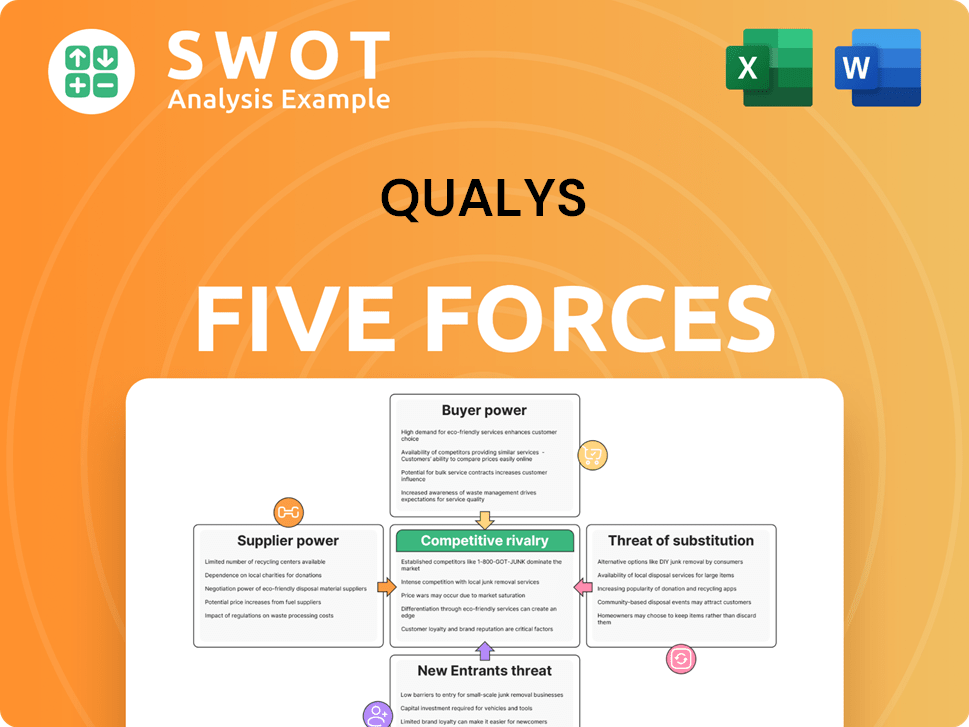
Related Blogs
- What are Mission Vision & Core Values of Qualys Company?
- What is Competitive Landscape of Qualys Company?
- What is Growth Strategy and Future Prospects of Qualys Company?
- How Does Qualys Company Work?
- What is Sales and Marketing Strategy of Qualys Company?
- What is Brief History of Qualys Company?
- What is Customer Demographics and Target Market of Qualys Company?
Disclaimer
All information, articles, and product details provided on this website are for general informational and educational purposes only. We do not claim any ownership over, nor do we intend to infringe upon, any trademarks, copyrights, logos, brand names, or other intellectual property mentioned or depicted on this site. Such intellectual property remains the property of its respective owners, and any references here are made solely for identification or informational purposes, without implying any affiliation, endorsement, or partnership.
We make no representations or warranties, express or implied, regarding the accuracy, completeness, or suitability of any content or products presented. Nothing on this website should be construed as legal, tax, investment, financial, medical, or other professional advice. In addition, no part of this site—including articles or product references—constitutes a solicitation, recommendation, endorsement, advertisement, or offer to buy or sell any securities, franchises, or other financial instruments, particularly in jurisdictions where such activity would be unlawful.
All content is of a general nature and may not address the specific circumstances of any individual or entity. It is not a substitute for professional advice or services. Any actions you take based on the information provided here are strictly at your own risk. You accept full responsibility for any decisions or outcomes arising from your use of this website and agree to release us from any liability in connection with your use of, or reliance upon, the content or products found herein.